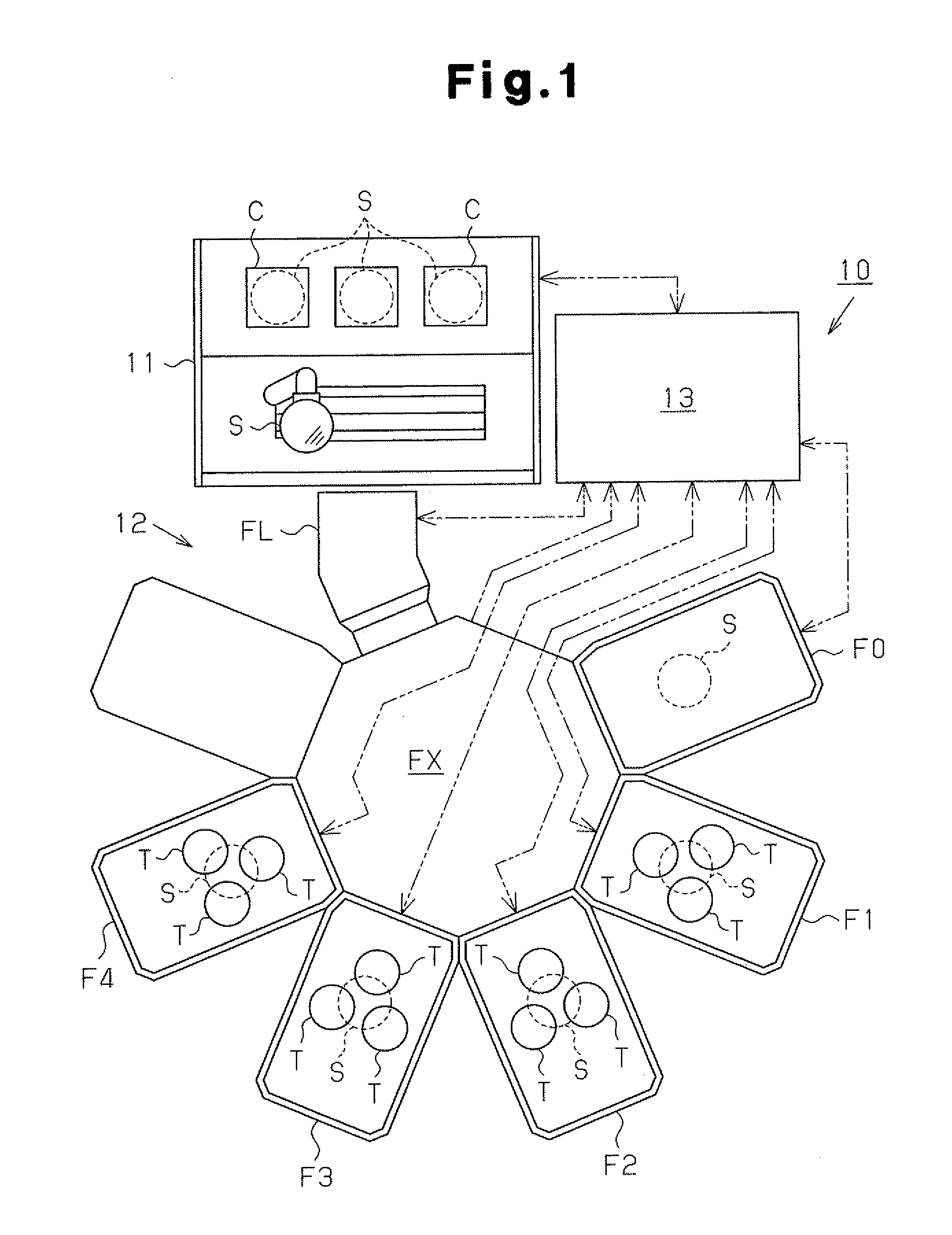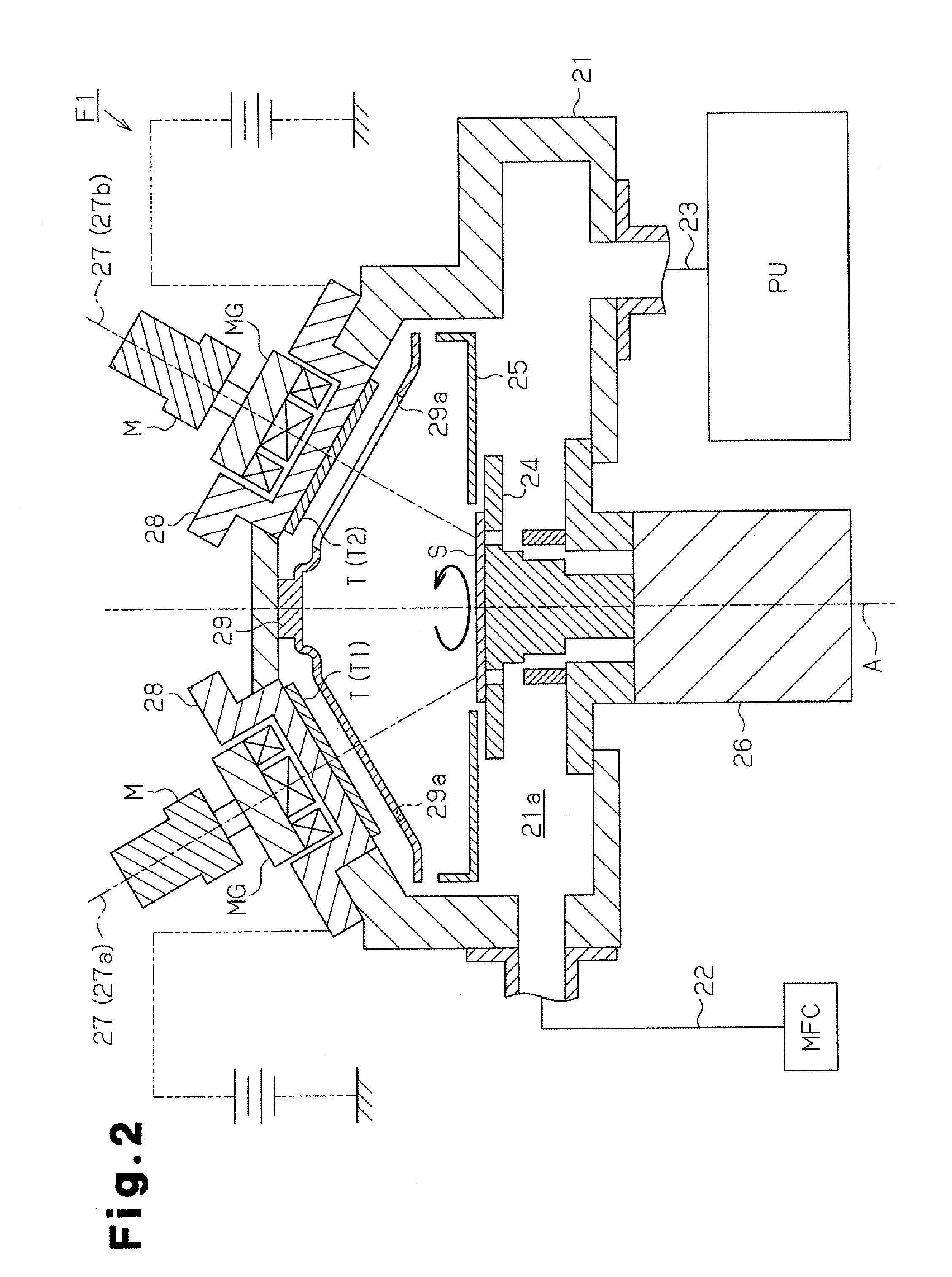Process for producing magnetic device, apparatus for producing magnetic device, and magnetic device
a technology for producing magnetic devices and magnetic devices, which is applied in the field of manufacturing magnetic devices, apparatus for manufacturing magnetic devices, and magnetic devices, and can solve the problems of large variations in the composition and film thickness of the antiferromagnetic layer within the plane surface of the substrate, and significantly deteriorating the magnetic characteristics of the devi
- Summary
- Abstract
- Description
- Claims
- Application Information
AI Technical Summary
Benefits of technology
Problems solved by technology
Method used
Image
Examples
example
[0059]An example will now be used to describe the present invention.
[0060]First, a silicon wafer having a diameter of 200 mm was used as a substrate. A film formation process was performed on the substrate S by the manufacturing apparatus 10 to obtain a superimposed film of Ta (5 nm) / Ru (20 nm) / MnIr (10 nm) / CoFe (4 nm) / Ru (1 nm) / Ta (2 nm).
[0061]In detail, the antiferromagnetic layer chamber F1 was used to superimpose a Ta film having a thickness of 5 nm and an Ru film having a thickness of 20 nm, and then an MnIr film having a thickness of 10 nm was formed to obtain the antiferromagnetic layer. An alloy target of which composition was Mn77Ir23 and having a diameter of 125 mm was used as the second target T2. The distance between the substrate S and the target T was set as 200 mm in the normal direction of each target T. Further, Kr was used as the processing gas.
[0062]Next, the fixed layer chamber F2 and the free layer chamber F4 were used to form a CO70Fe30 film having a thickness ...
PUM
| Property | Measurement | Unit |
|---|---|---|
| Temperature | aaaaa | aaaaa |
| Temperature | aaaaa | aaaaa |
| Pressure | aaaaa | aaaaa |
Abstract
Description
Claims
Application Information
 Login to View More
Login to View More - R&D
- Intellectual Property
- Life Sciences
- Materials
- Tech Scout
- Unparalleled Data Quality
- Higher Quality Content
- 60% Fewer Hallucinations
Browse by: Latest US Patents, China's latest patents, Technical Efficacy Thesaurus, Application Domain, Technology Topic, Popular Technical Reports.
© 2025 PatSnap. All rights reserved.Legal|Privacy policy|Modern Slavery Act Transparency Statement|Sitemap|About US| Contact US: help@patsnap.com



